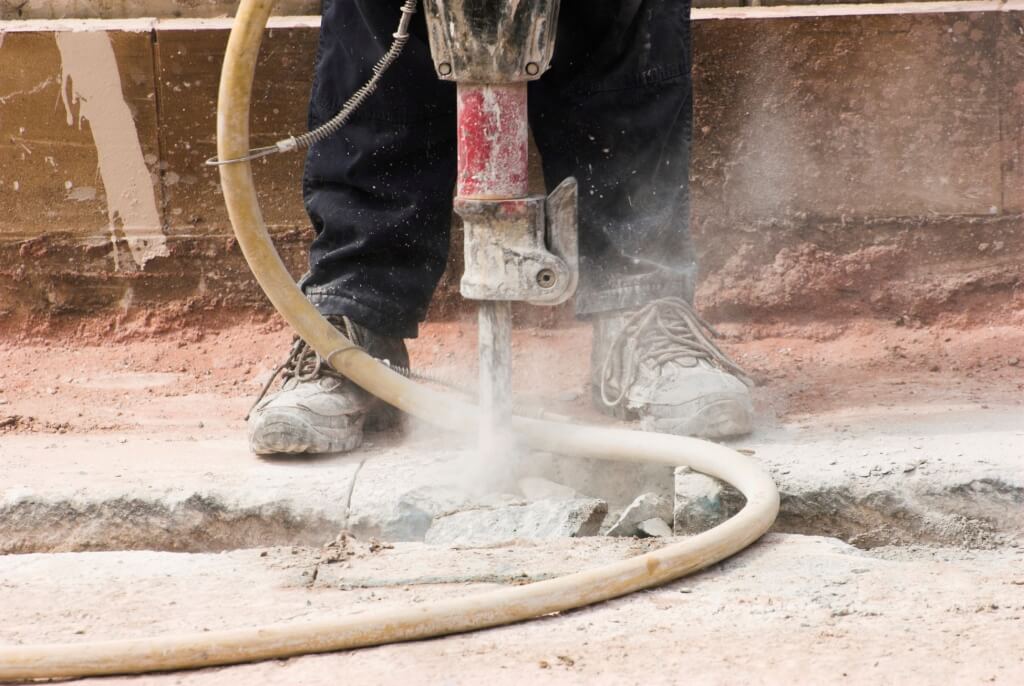General Industry and Maritime Silica Standard Effective June 23

General industry and maritime employers must comply with OSHA’s silica standard by June 23, except for phase-in dates for medical surveillance and for engineering controls in the oil and gas industry.
On June 8, OSHA issued a memorandum outlining the initial enforcement of the standard for respirable crystalline silica in general industry and maritime.
The standard establishes a new 8-hour time-weighted average permissible exposure limit, action level, and associated ancillary requirements.
During the first 30 days of enforcement, OSHA will offer compliance assistance for employers who make good faith efforts to comply with the new standard.
OSHA intends to issue interim enforcement guidance until a compliance directive on the new standards is finalized.
OSHA’s Small Entity Compliance Guide for the Respirable Crystalline Silica Standard for General Industry and Maritime discusses methods of compliance, such as using engineering and work practice controls, assessing exposure levels, respirator use, medical surveillance, and written exposure plans.
Background
In early 2016, OSHA announced a final rule on respirable silica dust written as two standards, one for construction and one for general industry and maritime.
OSHA began enforcing most provisions of the construction standard on Sept 23, 2017.
The new standards will help curb lung cancer, silicosis, chronic obstructive pulmonary disease, and kidney disease by limiting workers’ exposure to respirable crystalline silica.
About 2.3 million men and women face exposure to respirable crystalline silica dust in their workplaces, including two million construction workers who drill and cut silica-containing materials such as concrete and stone, and 300,000 workers in operations such as brick manufacturing, foundries, and hydraulic fracturing.
Most employers can limit harmful dust exposure by using equipment that is widely available—generally using water to keep dust from getting into the air or a ventilation system to capture dust where it is created.
Overview of Silica Standards
The silica standards will improve worker protection by:
- Reducing the permissible exposure limit for crystalline silica to 50 micrograms per cubic meter of air, averaged over an eight-hour shift
- Requiring employers to use engineering controls (such as water or ventilation) and work practices to limit worker exposure; provide respiratory protection when controls are not able to limit exposures to the permissible level; limit access to high exposure areas; train workers; and provide medical exams to highly exposed workers
- Providing greater certainty and ease of compliance to construction employers—including many small employers—by including a table of specified controls they can follow to be in compliance, without having to monitor exposures
- Staggering compliance dates to ensure employers have sufficient time to meet the requirements, e.g., extra time for the hydraulic fracturing industry to install new engineering controls and for all general industry employers to offer medical surveillance to employees exposed between the PEL and 50 micrograms per cubic meter and the action level of 25 micrograms per cubic meter.
Register now for the CONN-OSHA Breakfast Roundtable Discussion, Assessing Silica Risk in the Workplace, June 19, 8:15–9:45 a.m., in Wethersfield.
RELATED
EXPLORE BY CATEGORY
Stay Connected with CBIA News Digests
The latest news and information delivered directly to your inbox.


